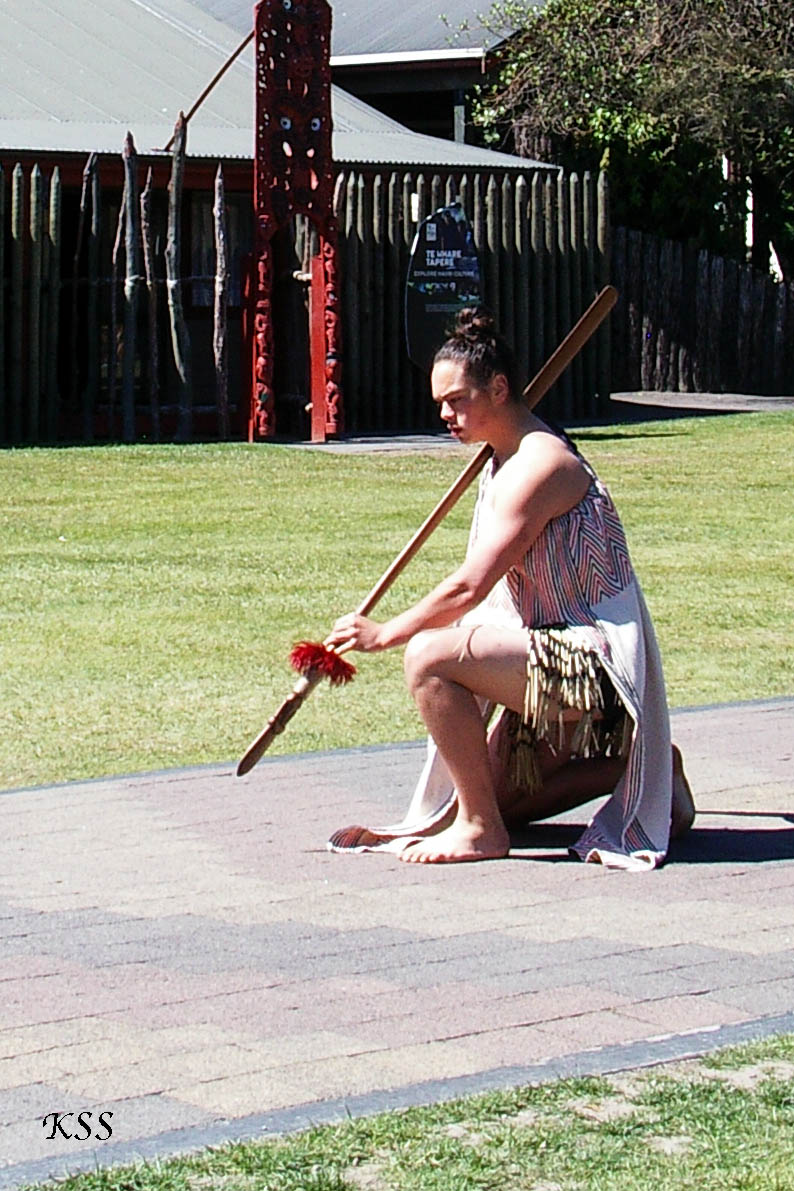In picture of the weavers in the last post, one of the women had a tattoo on her chin.
Tattoos, called Moko, have been an integral part of Maori culture for many hundreds of years. Far more than decorative, the tattoos and their location tell about the person who bears them. The male face is divided into eight Moko regions, and the tattoos tell tribal rank, birth order, tribal history, eligibility to marry, father’s and mother’s lineage, and more.
Women’s faces have a smaller ‘map’ than men's, and like men, they may have tattoos elsewhere. The female moko tell of rank, family lineage, marriage status, fertility (after the first child is born) and more.
One member of our tour, seeing a once-in-a-lifetime opportunity, gets a tattoo of his ‘family tree’ on his leg:
The spirals (Koru) have many possible meanings--experience, new life, human connections. I can’t really explain this guy’s tattoo, but knowing that interconnected spirals usually refer to the strength of human bonds, I can see how it would represent family.
* For more information on tattoo meaning, check http://www.themaori.com/maori-tattoo/moko- meaning
Jewelry Carving
Just as weaving is imbued with the artist’s spirt, so are personal decorative carvings. Maori believe that the carved gift creates a bond between recipient and giver. There’s nothing unusual in that--but for the Maori who hand-carves a pendant, the bond carries with it the spirit of the artist. If something like this passes down to the next generation, the spiritual bond is even greater.
The most common media for jewelry carvings are bone (these days most likely cow instead of whale bone) and a green nephrite jade called pounamu, found primarily in NZ.
The Koru (spiral) appears in carvings as well as tattoos. I talked about Manaia in my previous post on carving. Manaia may stand for the link between spiritual and mortal world, and the cycle of life: the three fingers in the work represent birth, life, and death.
Speaking of important symbols....for a while, I was confusing the Manaia and the Tiki.
Manaia
manaia from http://boneart.co.nz/featureartist.html
But they are not the same. The Tiki is an ancient symbol that appears in many Polynesian cultures. Although I’ve found several variations for its meaning, one thing is consistent: the Tiki is a fertility symbol.
Because the sea was a major source of food for the Maori, the symbol of the fish hook -- Matau-- can refer to food, wealth, and good fortune in anything related to the sea.
My fishhook pendant, most likely carved from cow bone (cows were brought to the islands by Europeans; prior to the arrival of Europeans there were no known mammals in New Zealand.
When I bought the nephrite pendant above, I thought it was another representation of a fish hook. After some research, I think it may be an eel, still standing for food and but a more modern carving than the hook or the spiral.
Twists --single, double, and even triple --stand for the path of life and the connection between people or groups of people. Because the carving has no obvious ‘beginning or end', it also refer to eternity.
For more information on Maori carving meanings, please visit http://www.tuarangi.com/meaning-of-maori-symbols-and-designs/




























